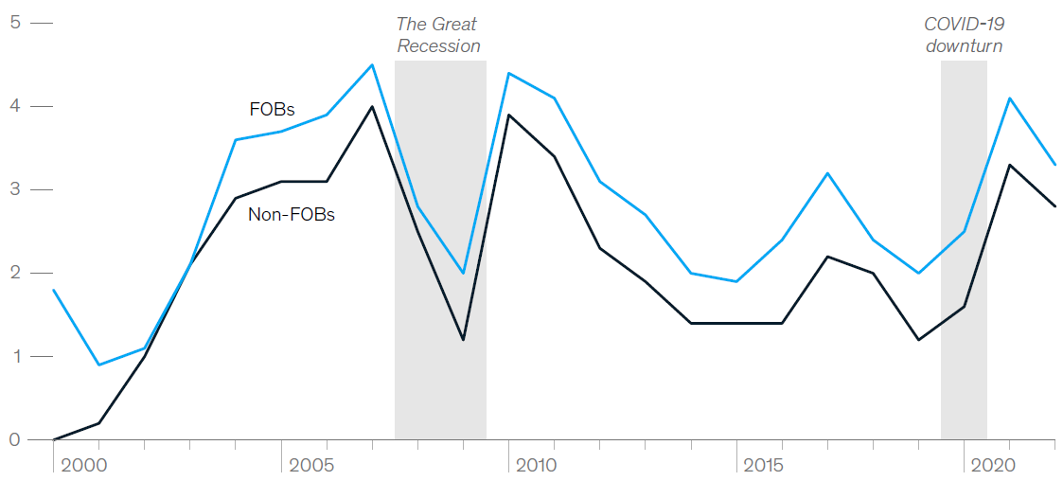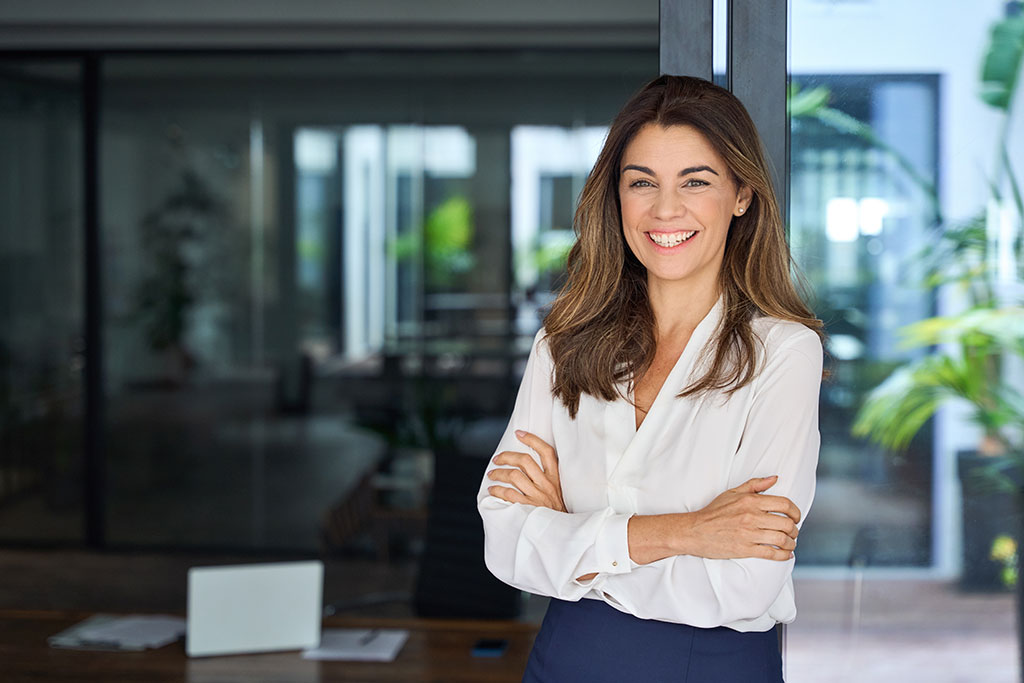More resilient and more successful, these companies require a special coaching board of directors.
A recent study by McKinsey & Company shows that, overall, family businesses, i.e. companies that are majority-owned by members of the same family, are more resilient and more successful in terms of profitability.
This study compared 600 family businesses with 600 non-family businesses.
FOB are family businesses, which in this study own more than 20% of the capital.
The study also shows that family companies have a greater impact on business, with better-organized management structures and stronger governance. They also take a longer-term view, as their greater conservatism reduces their appetite for short-term returns. They diversify their activities more, and reallocate resources more easily if they lose efficiency.
But how are family companies' boards organized?
Of the 600,000 businesses registered in Switzerland (Source OFS 2021), 80% are microenterprises (1 to 9 jobs). An estimated 80% of the remaining 20% are family businesses. This means that almost all businesses in Switzerland are in fact family-run.
Conflicts of interest and intergenerational conflicts
The management of conflicts of interest, reinforced in 2023 (CO 717a), and intergenerational conflicts are permanent challenges in these companies. Shareholder founders (often fathers and mothers) pass on their "baby" to children or close family members. The latter have very different visions of business strategy. They are, for example, more ESG (Environment, Social and Governance) oriented. As a result, frustrations often arise on both sides, which can lead to major legal disputes, or even the bankruptcy of the company.
This is where an executivecoach specialized in boardroom work can come in. This can be done either by coaching a director directly, or by facilitating the entire board of directors.
What can be done to reduce these risks?
The independent director :
It should be remembered that, to be independent, a director does not own shares in the company, and has no family or friendship ties with any of the shareholders. This independence confers on them the ability to make decisions that are always in favor of the company's future, and not their own interests. He also acts as a buffer, a safeguard and a mediator between the various family shareholders.
The coaching of directors, mentoring of members :
Whether you're an independent administrator, or family members see the benefits of appointing a coach expert or neutral mediator is another way of reducing the risk of conflict. Indeed, the coach professional will act more as a facilitator of discussions, maintaining a framework of psychological safety. coaching in management will also enable directors to optimize their skills and know-how, even during heated discussions.
The independent director will take part in discussions and give his or her opinion completely independently. They can also act as mediators in potential conflicts. More personally committed, he or she will be even more motivated to make decisions in the company's favor.
So what's the difference between an external mediator / coach and an independent director?
The independent director is appointed to the Board of Directors. They are personally and legally (civilly and criminally) liable for the conduct of the company. The external mediator / coach executive does not expose himself to any risk. He comes and goes without the quality of his commitment being open to attack. This lesser involvement can nevertheless have advantages, notably greater detachment and, consequently, a greater ability to tackle delicate issues.
The complexity of being an independent director of a family-owned company is clear to see. Indeed, it is the shareholders themselves who appoint him/her, and with whom he/she runs the risk of clashing. This is all the more true when it comes to strategic decisions that may benefit one shareholder or another.
The independent director also has the legitimacy to interact with the company's operational management. At this level, he can also ease tensions between shareholders and the executive team.
The specific case of the independent director - coach
In short, if the independent director also possesses active listening and conflict management skills, he or she can combine both roles. Indeed, in the case of a family-owned company, he or she can become first and foremost a coach strategic mentor for the whole family.
In this particular case, the independent director must also have a human touch, excellent assertiveness, excellent resilience and good interpersonal skills.
I always advise independent directors to take training courses at coaching or mentoring, or even at coaching .
The idea is to refine the mastery of techniques such as open questions and the art of active listening. Coaching a board member is a delicate task, requiring a great deal of experience. Coaching a Board of Directors is even more strategic.
Last but not least, the independent director of a family-owned company must also have sound legal, financial and shareholder management skills.
It is strongly recommended that the installation of an independent director on the board of a family-owned company takes place when there are no conflicts, or before the owners transfer all or part of their shares to family members.
For information on coaching and the role of independent director, please contact Eric Maire.
For further information, please also contact Fabienne Revillard
Discover also AAA+ Coaching and Training on Facebook and Linkedin
Would you like to find out more? You may also be interested in these articles:
How to make your board more effective?
What role does the Chairman play in the Board's effectiveness?
Better to coach the CEO or the whole executive comittee ?
Are you looking for tips for successful career progression?
Sign up at newsletter and receive our offers and tips for better professional development.






